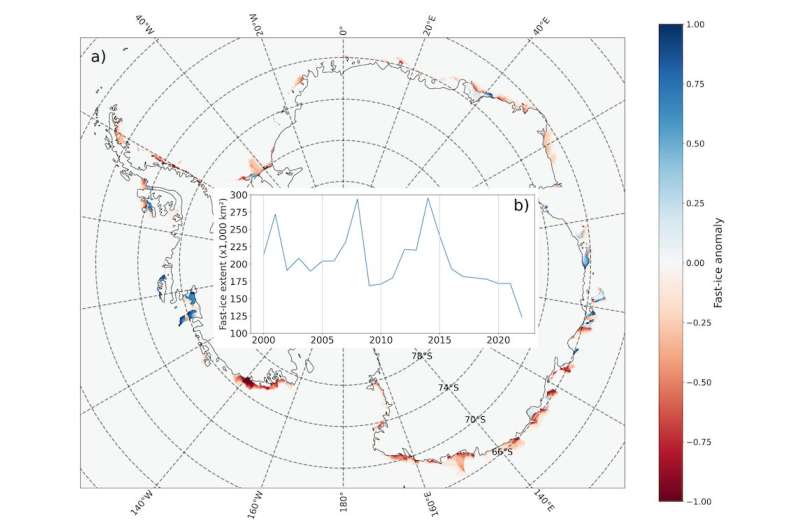
Much of the ice lost in 2022 had been present since 2000, when high-quality records began. If this trend persists, the consequences for the climate and for Southern Ocean ecosystems could be catastrophic.
Antarctic sea ice drives the circulation of the world’s oceans. The “overturning” circulation begins in Antarctica when very salty, dense brine (created as the ice forms) sinks to the bottom of the ocean. This “bottom water” spreads away from Antarctica to reach the northern hemisphere.
This crucial circulation is projected to slow due to glacial melt, because the input of more buoyant fresh water dilutes the denser brine. This raises the specter of a further slowing or worse, total shut down of deep ocean currents as in the disaster movie, “The Day After Tomorrow.” We know concentrated regions of sea ice formation tend to occur next to landfast ice, so the changes we are seeing are likely to further reduce this deep ocean circulation.
Landfast sea ice is not represented in any global climate model. These models treat all sea ice as if it’s able to drift, whereas in reality up to 15% of ice should be held still by being anchored to land or grounded icebergs.
This is a big problem because, as our study reveals, if we don’t properly simulate it, we are likely to get all kinds of inaccurate flow-on effects, including an incorrect amount of sea ice (and hence dense water) produced by our models.
Landfast ice supports a unique community of algae, krill, small crustaceans called copepods, mollusks and fish. They are adapted to live within and below the ice where conditions are harsh.
Seals and penguins rely on this environment for resting, hunting and breeding. Emperor penguins have a unique approach to raising a family that requires stable ice, which only landfast ice can provide. Reduced ice extent, increased fragmentation and earlier breakup can lead to population declines of this iconic species.